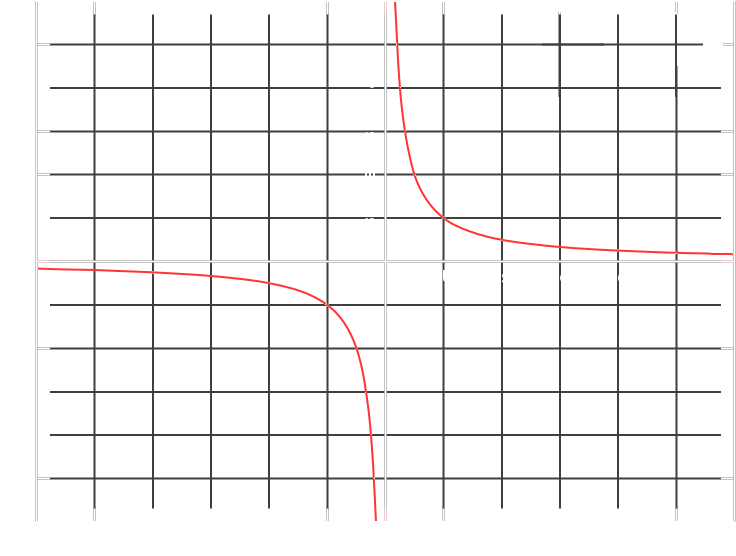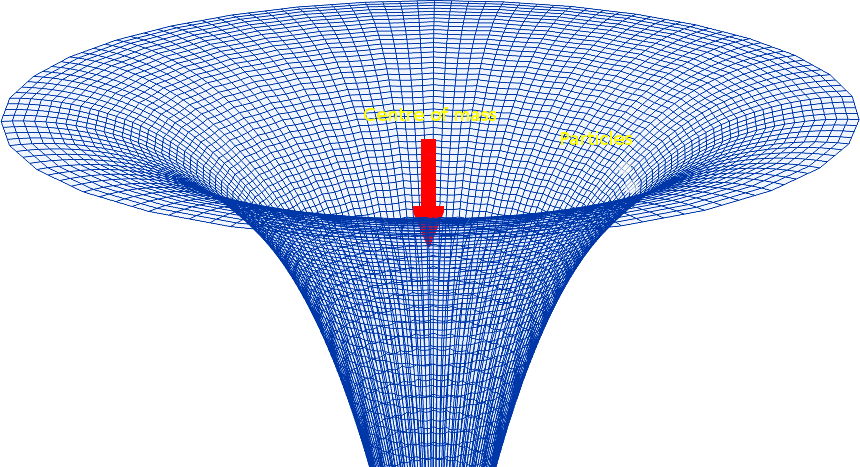There was no Big Bang
The problem with perspective

An important thing to understand when trying to understand time and speed, which Einstein taught us, is that everything is relative.
When discussing these effects we need to understand from which viewpoint we are considering.
There are at least 2 viewpoints:

- the observer: which could be you or it could be another perspective of some body you are considering.
- the external frame: which could be another observer, or you (if this is about another body),
or something else like spatial infinity "the outside" or a black hole singularity.
Travelling in Time

Near a black hole, you will see rest of the universe in fast-forward.
Looking in to a black hole you see stuff in slow-motion.
Nothing new there (wikipedia:Gravitational_time_dilation).

This means that if you we to be at the actual centre of the black hole, the singularity (r=0), the rest of the universe "plays" at infinite speed (tf = ∞).
And if you are outside of the black hole (your time is tf), if it were possible to see the objects at the singularity (r=0), they would appear paused (t0=0).
So it's safe to say the passage of time (play speed) of the universe is inversely proportional to the strength of gravity.
Since as you get closer to the singularity time of the rest of the universe passes quicker.
It's actually inversely proportional to the square root of the radius, which means in reality it cannot be negative.
This is a plot of the observed speed of the rest of the universe from the observers point (dt) vs their distance to the singularity(r)

This is a standard reciprocal equation where the distance from the singularity is r and the passage of time is dt.
For our scenario there is only the upper right quadrant due to this "inversely proportional to the square root".
r = k/dt
k/r = dt
so for r=∞ k/r = k/∞ = 0 = dt
So this means at infinite distance from the singularity dt=0, i.e.: time does not pass.
So in the absence of gravity there is no passage of time.
Since the strength of gravity is proportional to an objects mass this means in the absence of mass there is no passage of time.
Before the big bang was an absence of mass, which means there was no passage of time.
From our perspective this would mean that the "big bang" would have happened, not 18 billion years ago, but in the infinite past!!!
So...
It never occurred!.
...and it gets worse :)
What we call gravity seems actually just our perception of the passage of time.
gravity itself as an independent force of the universe actually doesn't exist.
It may be another dimension, but it's not a force like electromagnetic or strong/weak nuclear.
So it doesn't need inclusion into the standard model.
Which means...
There is no need to reconcile Relativity with Quantum Physics as the gravity part of the problem, the thing that stops it from being reconcilable, doesn't exist!!
It already makes sense, just we've being looking at it wrong!
Gravity as a Dimension.
From classical physics we get Newtons gravity equation:
F = G.m1.m2/(r.r)
This describes gravity as a property of a body, i.e. a field applied due to the mass of the body.
..so we modify this to a parametric equation for each mass of a closed system:
F = G . m1/r1 . m2/r2 . m3/r3 ...etc
Where m1 is mass 1 and r1 is the distance of mass 1 from the centre of mass of the rest of the system,
Where m2 is mass 2 and r2 is the distance of mass 2 from the centre of mass of the rest of the system,
etc...
We are basically treating the system as a 2 body one:
One body is the one in which we are interested, the other is the combined mass of the rest treated as a single mass.
So here we are describing several masses and a force applied due to them being a some radius from a centre of mass of the rest of the system, rather than just each other.
So gravity becomes a dimension in the system and not a property of the individual masses.
For each term, if r = ∞ (a particle infinitely distant from the other masses) then F = 0
also dt -> 0 since dt = k/r and r -> ∞ (where r is the distance from the centre of mass of the rest of the system).
Reconciling the Quantum world with the Relativistic world
Using the Newton-North Gravity equation (there's nothing like inflating one's ego :)
F = G . m1/r1 . m2/r2 . m3/r3 ...etc
Here we can consider the problem of force on small particles.
In the atom the distances are very small so r -> 0.
This would mean that m1/r1 would be huge even for a small mass, so meaning the forces should be immense.
...but they can't be.
How does the Newton-North Gravity equation fix this?
Well when measuring the distance we are not just using the distance of the particles from each other, but now from the centre of mass of the rest of the system.
...and in the real world, this includes the mass of the other bodies in the universe!!
If gravity is a dimension then this means it's relative to the gravity well at the location the stuff is measured.
Like the earth's gravity well if we are measuring on earth.

So the distances are actually very large.
Which means the m1/r1 term is now small and the force is small as it should be within an atom.
Problem solved. (takes bow and exits stage left)
Predictions of this
As a result of the Newton-North Gravity equation this predicts something quite odd.
Consider a system of multiple bodies of similar mass, say 3 planets all at the points of an equilateral triangle orbiting

If this equation holds true, then a gravity well forms in the system where the lowest point in the well is in fact in the centre of the triangle,
and not within the nearest of 3 bodies from the view of the approaching body.
This means any small bodies approaching the system would in fact tend to move to the centre of the triangle rather than one of the bodies.
As the object approaches the set it will be caught according to the gravity well of the nearest body so will probably fall to it as expected.






